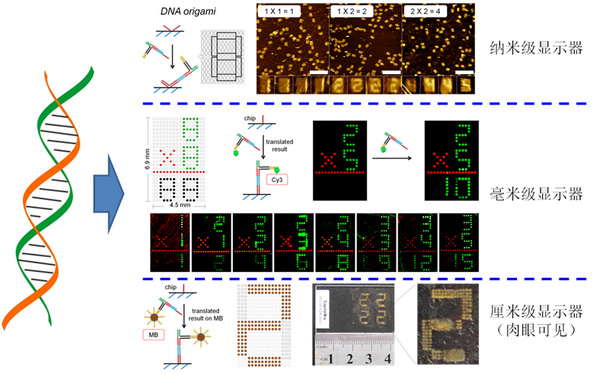DNA can encode non-genetic information into its nucleotide sequence, allowing multiple calculations to be performed at once through the simultaneous interaction of thousands of DNA molecules. However, most currently available DNA-based computing systems work by using a series of logic operations that make those systems complex and low efficiency.
Recently, Huajie Liu and Chunhai Fan from Shanghai Institute of Applied Physics, CAS and Kurt V. Gothelf from Aarhus University have developed a new prototype DNA computer using combinatorial approach that works as a lookup table to ensure to get the correct result immediately in one step. This work was published in Nature Communications, 2015, 6, 10089.
It is a DNA-based system that takes two input numbers, represented in DNA strands, and returns the result of their multiplication, writing this as a number in a display. Unlike a conventional calculator, this system operates by selecting the result from a library of solutions rather than through logic operations. The system converts the selected result to Arabic numerals with one or two digits that are displayed on different templates, from the nanoscale to the macroscale. The multiplicative example demonstrated a much more general capability—to generate a unique output for any distinct pair of DNA inputs. The system functions as a lookup table and could be a key component in future, more powerful data-processing systems for diagnostics and sensing.

Contact
Fan Chunhai
Shanghai Institute of Applied Physics(SINAP),CAS
E-mail: fanchunhai@sinap.ac.cn

